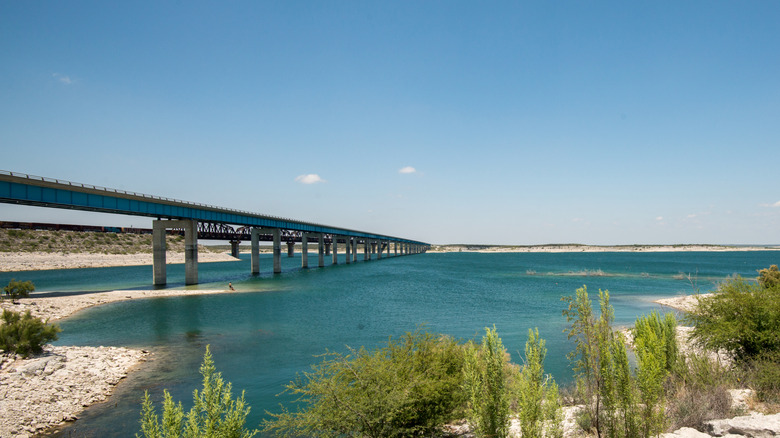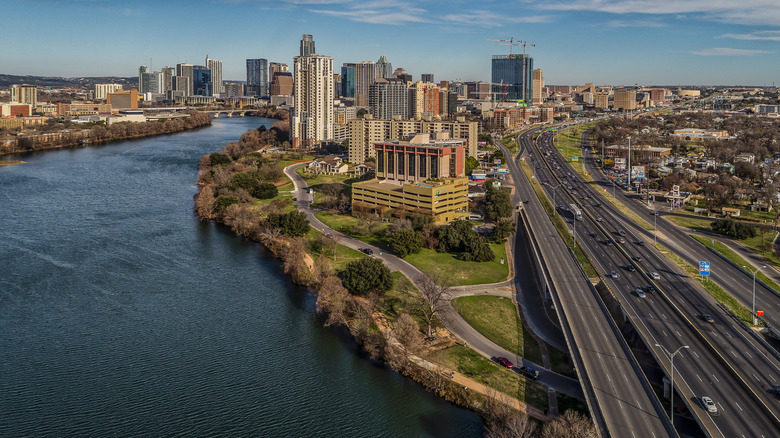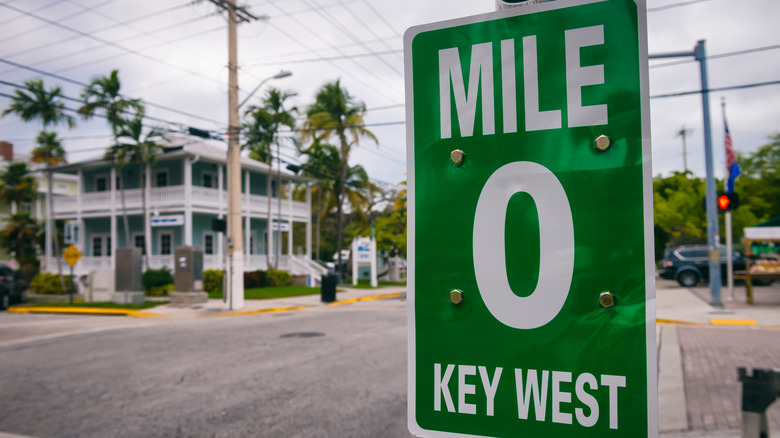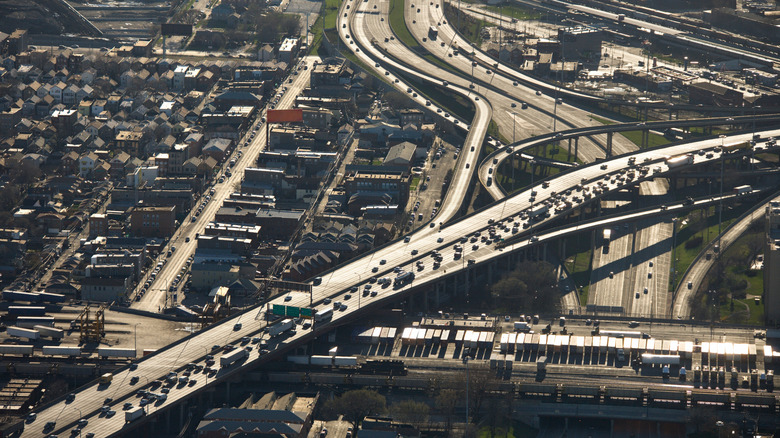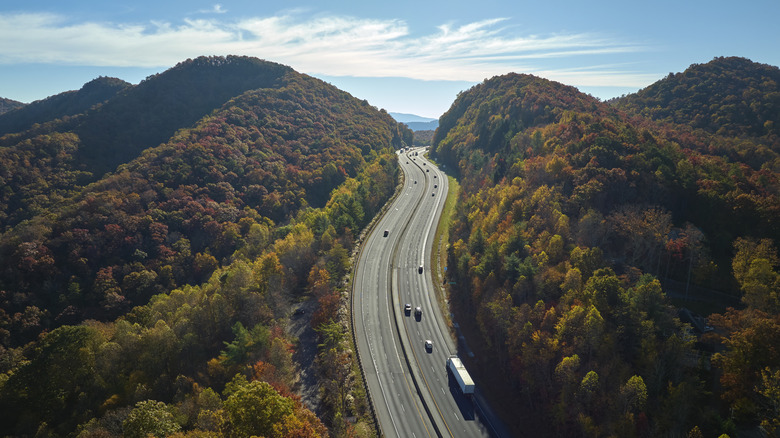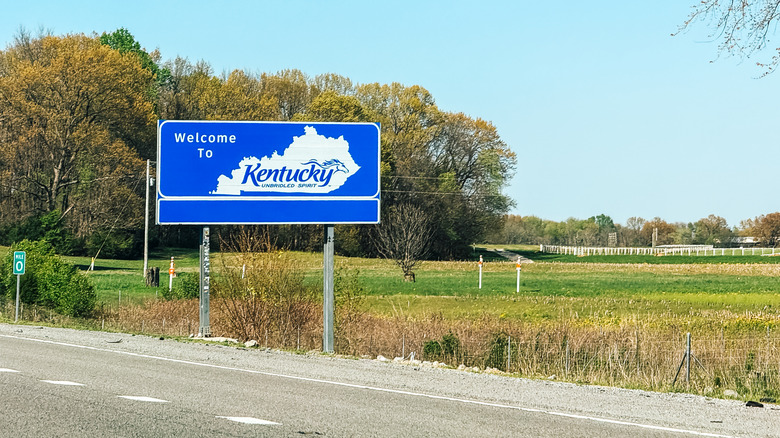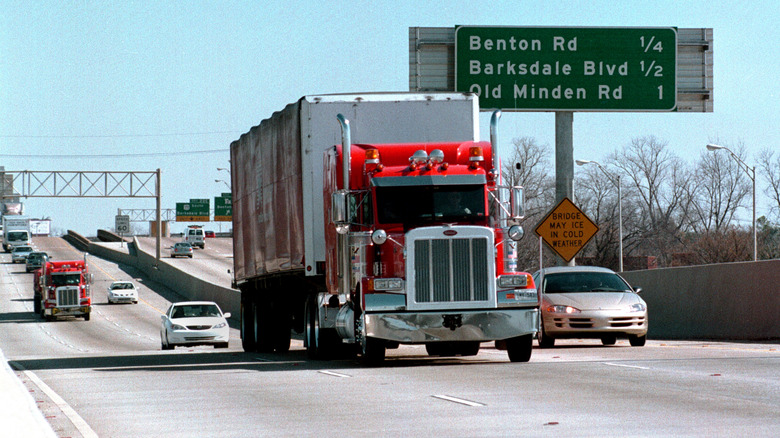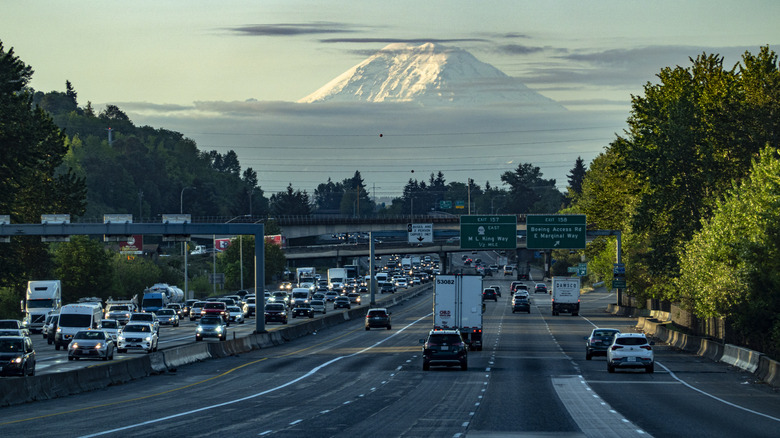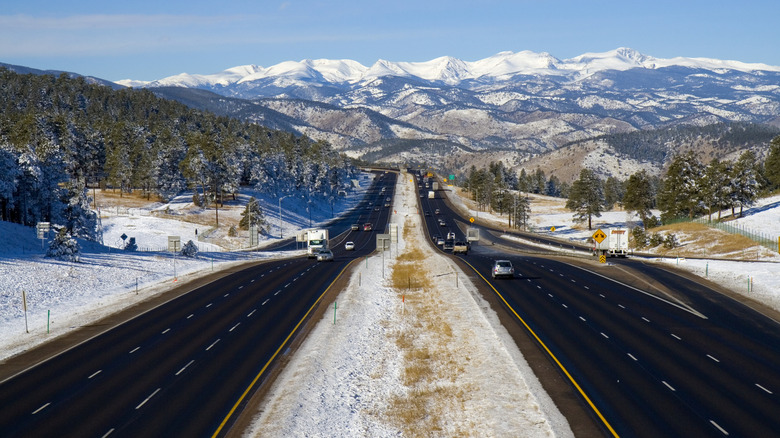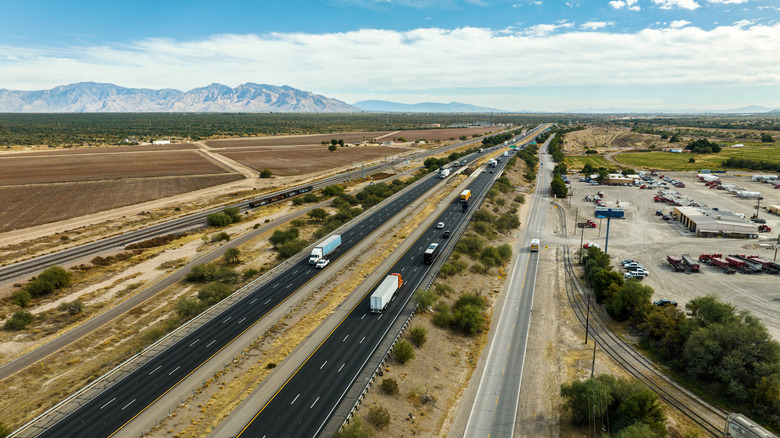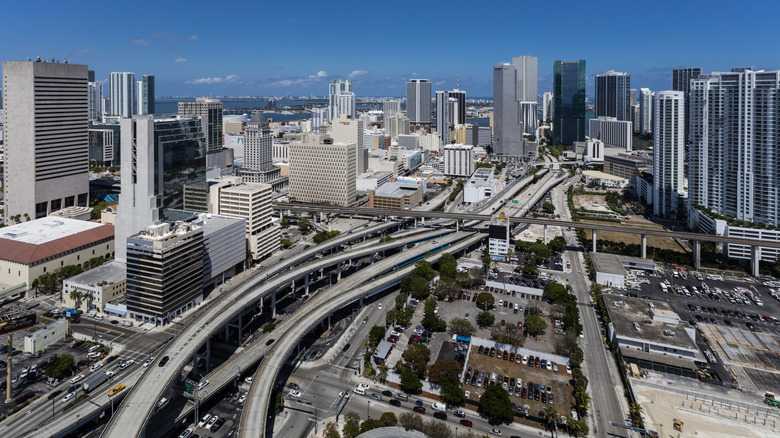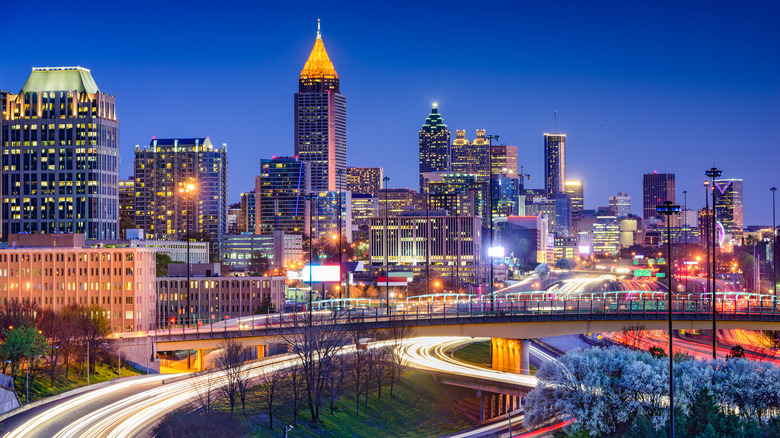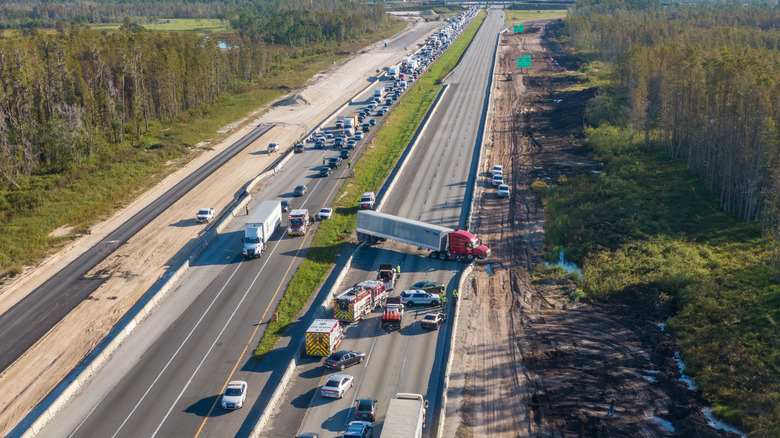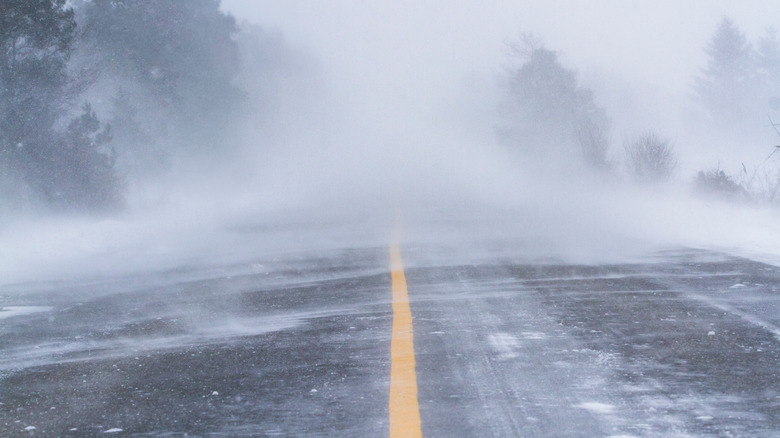The Most Dangerous Roads Across America To Avoid On Your Next Trip, According To Research
Every year, tens of thousands of people are killed or injured on U.S. highways, but the risks are not evenly spread. While some roads are celebrated as the most stunning and storied routes for your perfect U.S. road trip, others have a darker reputation, consistently recording some of the highest crash numbers in the nation. These are the stretches where heavy traffic, risky behavior, and unforgiving environments combine to make travel especially perilous. To identify which stretches of road are the most hazardous, this ranking digs directly into the Fatality Analysis Reporting System (FARS) data from the National Highway Traffic Safety Administration, the most authoritative source on road safety in the United States.
Every fatal crash on America's highways is recorded in a national database, along with where it happened, how many people were killed or seriously injured, and whether alcohol played a part. By comparing these details with the length of each road, it is possible to see the top 15 routes where the risks are most concentrated. Some are sprawling interstates that carry commuters and freight across multiple states, while others are shorter routes where the combination of traffic, design, and driver behavior makes them particularly treacherous. What unites them is not their length or fame, but the intensity of the danger they pose to travelers.
U.S. 90
Stretching from Texas to Florida, U.S. 90 might not be as famous as the interstates that run alongside it, but the latest data shows it to be the 15th most dangerous road in America, with roughly 6.5 deaths per 100 miles — they had 108 fatalities in 2023, according to the National Highway Traffic Safety Administration. Its danger lies less in sheer traffic volume and more in the conditions drivers face. FARS records reveal that most crashes are single-vehicle run-offs, often happening after dark on poorly lit rural stretches in Louisiana and Texas. Alcohol is a recurring factor, amplifying the risks when drivers misjudge curves or drift off long, empty stretches of road.
Unlike interstate highways, which are built to stringent safety standards featuring divided lanes, wide paved shoulders, and median barriers, rural roads like US-90 often lack many of these safety design elements, which can increase the likelihood and severity of crashes. This is supported by research from the NHTSA showing that in 2023, 41% of U.S. traffic fatalities occurred in rural areas, though only 20% of the population lives there, and rural zones accounted for just 31% of vehicle miles traveled.
U.S. 101
Also known as the Ventura Freeway, Highway 101, or simply "the 101," U.S. Route 101 runs from Los Angeles through California, Oregon, and Washington. It's a road of contrasts: A multi-lane commuter freeway through Los Angeles and San Francisco, then a winding two-lane highway skirting redwood forests and coastal cliffs further north. According to the latest data available from the NHTSA, the highway records about 6.6 deaths per 100 miles, with 103 fatalities in 2023. Alcohol played a part in nearly one in three severe crashes, one of the highest proportions among the top 15 roads.
More than half of fatalities were single-vehicle runoffs, often occurring at night on undivided rural stretches in Northern California and Oregon, where poor lighting and sharp curves increase risks. By contrast, urban sections in Los Angeles and San Francisco saw congestion-driven pile-ups involving multiple vehicles. Beyond its higher accident rates, travelers face practical hurdles on the 101, too — from packed summer traffic to the expensive reason you might want to reconsider a California road trip.
Interstate 35
Running more than 1,500 miles from Minnesota to Texas, Interstate 35 is a vital north–south artery and one of the busiest freight and commuter routes in the nation. According to NHTSA FARS data, it recorded 116 fatalities, equal to roughly 7.2 deaths per 100 miles, in 2023, placing the route among the most dangerous interstates in America, mile for mile. The risks along I-35 vary sharply by region. In Kansas and Oklahoma, more than half of fatal crashes were single-vehicle runoffs, often linked to fatigue, speeding, or distraction on long rural stretches.
By contrast, Texas cities such as Dallas, Austin, and San Antonio saw frequent multivehicle collisions, driven by congestion, heavy freight traffic, and distracted driving. Weather played a relatively minor role — fewer than 1 in 10 fatal crashes occurred in rain, snow, or fog — underscoring that human error is the dominant factor here. Alcohol involvement was lower than on some other high-risk highways, but it still contributed to a significant share of weekend crashes. With booming urban corridors in Texas, rural monotony in the Plains, and constant truck traffic, I-35 blends nearly every type of road hazard.
U.S. 1
Stretching from Maine to Florida, U.S. Route 1 is one of the nation's oldest highways and still one of its busiest. It tops the list of the most breathtaking road trips along the West Coast, offering glimpses of small towns, bustling cities, and historic landmarks along its 2,328-mile path. But beneath its romantic appeal lies a sobering reality. According to NHTSA data, the U.S. 1 recorded 183 fatalities in 2023, equal to about 7.8 deaths per 100 miles. Unlike modern freeways, U.S. 1 was built before the era of high-speed bypasses, and it slices through towns and cities, often past businesses, homes, and crosswalks.
This type of 'arterial' design, prioritizing vehicle flow over pedestrian safety, creates dangerous conditions for people walking, biking, or turning into driveways. The FARS records reveal that multi-vehicle collisions are common in congested hubs like Miami and Boston, while rural stretches more often see single-vehicle runoffs. Weather was also a factor in around 1 in 5 severe crashes — higher than many interstates — with fog, rain, and storms reducing visibility along the coast.
Interstate 15
Spanning an impressive 1,433 miles, the Interstate 15 saw 145 fatal crashes in 2023 and averaged 8.9 deaths per 100 miles, according to the NHTSA FARS data. The road's dangers shift with the landscape. Through Nevada and Utah, long desert stretches encourage speed and fatigue, as the fact that nearly 60% of fatal crashes were single-vehicle runoffs shows, often happening at night. Weather rarely played a part — fewer than 1 in 10 fatal crashes were linked to rain or fog — making driver behavior the deciding factor. The stretch between Los Angeles and Las Vegas is especially infamous, packed with weekenders headed for casinos and nightlife — and perhaps unsurprisingly, alcohol played a big role in many of the crashes there. Farther north, around San Bernardino and Salt Lake City, the problem shifts: Heavy freight traffic and daily commuters crowd the road, making multi-vehicle collisions far more common.
Interstate 55
Running 941 miles from Chicago to New Orleans, Interstate 55 recorded 93 fatalities in 2023 (per NHTSA), which works out to about 9.8 deaths per 100 miles. At its northern end, near Chicago and St. Louis, the dangers come from congestion. Multivehicle crashes are frequent, fueled by distracted driving and commuter traffic blending with heavy trucks. South of Memphis, the road's character changes. Rural stretches in Mississippi and Louisiana see a greater share of single-vehicle runoffs, often at night or on weekends, and alcohol shows up in a troubling number of cases. Weather adds another layer of risk — snow and ice in Illinois and Missouri, torrential rain in the Deep South. And as a key corridor linking Midwestern factories with Gulf Coast ports, I-55 carries some of the heaviest truck volumes and freight-based congestion in the country, raising both exposure and crash severity. Mile for mile, it is one of America's most treacherous north-south arteries.
Interstate 40
Stretching 2,554 miles from California to North Carolina, Interstate 40 is one of the nation's great transcontinental highways — and also one of its most perilous. According to the latest FARS data, it recorded 256 fatalities in 2023, which translates to 10 deaths per 100 miles. The crash profile is as diverse as the road itself. More than 60% of fatal accidents were single-vehicle runoffs, reflecting the dangers of fatigue, distraction, and speeding across the long rural expanses of Oklahoma, Arkansas, and Tennessee.
Weather played a larger role here than on many other highways. About 13% of crashes involved snow, rain, or fog, from icy mountain passes in the West to severe thunderstorms in the South. Alcohol was another recurring factor, particularly among younger drivers, compounding risks on weekend nights. While rural sections dominate the death toll, I-40's urban interchanges — especially around Memphis and Raleigh — contribute their own hazards, with multivehicle pile-ups linked to congestion and truck traffic. With its sheer length, varied geography, and heavy freight use, I-40 encapsulates nearly every danger drivers face on U.S. roads.
Interstate 65
Running 884 miles from Indiana to Alabama, Interstate 65 recorded 91 fatalities in 2023 on the NHTSA, a figure that translates into a troubling 10.2 deaths per 100 miles. Its hazards vary by geography. In the Midwest, sections around Indianapolis and Louisville saw congestion-driven multivehicle crashes. Farther south, particularly in Kentucky, Tennessee, and Alabama, FARS records show a dominance of single-vehicle accidents on rural stretches, often tied to speeding, fatigue, or alcohol. In fact, alcohol was cited in nearly a quarter of severe crashes. Weather was a less frequent factor, though winter snow in Indiana and Kentucky did contribute to some fatalities.
The mix of urban density and long rural gaps makes I-65 especially challenging for long-haul truckers, who share the road with commuters and local traffic. While I-65 doesn't match the length of the cross-country giants, its consistently high crash severity per mile earns it a place among America's most dangerous highways. It also features the kind of isolated stretches that make reading up on the best things to do when your phone suddenly loses service on a road trip essential.
Interstate 20
I-20 may not match the length of coast-to-coast interstates, but its risks are outsized. Running over 1,500 miles from Texas to South Carolina, it recorded 162 fatalities (via NHTSA), translating to 10.5 deaths per 100 miles, in 2023. As with many of the entries on this list, much of the danger lies in its rural stretches. In Louisiana and Mississippi, more than half of fatal crashes were single-vehicle accidents, often tied to speeding, fatigue, or impaired driving. Weather factored into only about one in 10 crashes, and alcohol involvement was especially troubling on weekends, when nightlife and recreational travel pushed numbers higher.
But the risks aren't confined to rural miles. Atlanta, one of the South's busiest urban hubs, emerges as a clear hotspot for multi-vehicle collisions, where heavy commuter traffic and freight flows combine into frequent pile-ups. This split personality — long, monotonous rural stretches punctuated by intense city bottlenecks — leaves I-20 particularly unforgiving.
Interstate 5
Interstate 5 runs the full length of the U.S. West Coast, from San Diego to Seattle. In 2023, it was the site of 167 fatalities, equal to 12 deaths per 100 miles, and the FARS data shows that more than half of these deaths were the result of single-vehicle accidents, pointing to speed, distraction, and fatigue as central factors. But not all of I-5's risks come from solitude on the open road. In major urban areas like Los Angeles, Portland, and Seattle, congestion brings another danger — multivehicle pileups where heavy traffic and limited space leave little margin for error.
And for anyone considering a California road trip, there's more to weigh than just crash statistics. Long gaps between service stops test drivers' endurance, and you might want to avoid packing fresh produce due to import reasons. On I-5, those realities collide with one of the state's busiest, most accident-prone routes — it's a vital corridor, but also one of the deadliest.
Interstate 75
Spanning nearly 1,800 miles from Michigan to Florida, linking Detroit to Atlanta, Tampa, and Miami along one of the busiest north–south corridors in the country, Interstate 75 recorded 240 fatalities in 2023, which equates to about 13 deaths per 100 miles, according to the NHTSA FARS data. The risks on this route are shaped by geography. In Georgia and Florida, holidaymakers bound for beaches and theme parks share the road with long-haul freight trucks, creating crowded lanes where mistakes quickly turn deadly.
Road-trippers should bear in mind that congested stretches in and around cities like Detroit, Atlanta, and Tampa produce frequent multivehicle pileups, while rural sections tell a different story. These include late-night runoffs where seatbelts are too often unused. If you are planning a road trip in Florida, though, there's more than one way to go. Beyond the deadly statistics of I-75, travelers might prefer Florida's awe-inspiring road trip route that explores the state's underrated wines and waterfalls. It's a gentler reminder that the Sunshine State offers scenic alternatives to its busiest and most hazardous highways.
Interstate 10
Few highways capture the sheer scale of American driving like Interstate 10. Running more than 2,400 miles from the Pacific to the Atlantic, it's the southernmost coast-to-coast route — and one of the riskiest. In 2023, the NHTSA records that 356 people were killed on I-10, a toll that translates to 14.4 deaths for every 100 miles, among the highest rates of any major interstate. The hazards shift with the landscape. In the deserts of Arizona and West Texas, endless straightaways tempt drivers into pushing speed and stamina, with fatal single-vehicle runoffs accounting for more than 60% of deaths.
Crossing Louisiana's bayous, impaired driving emerges as a stubborn threat, while fatigue at night magnifies the danger. Weather isn't often to blame — fewer than 1 in 10 fatal crashes involved rain or fog — leaving behavior as the decisive factor. Cities along the route bring another set of problems. Houston, Phoenix, and Los Angeles are notorious for gridlock, and when traffic increases, pileups follow. I-10 is indispensable to commerce and travel, but its size, speed, and strain on drivers make it a highway where a moment's lapse can have lasting consequences.
Interstate 95
Interstate 95 is more than just a highway; it's the backbone of the East Coast, stretching nearly 2,000 miles from Miami to the Canadian border in Maine. It cuts through some of the nation's most densely populated regions, and in 2023, it was the scene of 286 fatalities (via NHTSA), equal to 15 deaths per 100 miles. What makes I-95 especially hazardous is its unrelenting pace. From Miami through Washington, Philadelphia, New York, and Boston, traffic never truly subsides. Congestion fuels frequent multivehicle collisions, and alcohol adds another layer of risk, showing up in a striking number of weekend crashes.
In its quieter rural stretches, notably in the Carolinas and Maine, the dangers shift toward single-vehicle runoffs, often tied to fatigue or speeding on long, monotonous drives. Weather — from summer storms in the South to icy winters in New England —raises the stakes further. It's a road that millions depend on daily, yet its sheer exposure, density, and variety of hazards keep it firmly ranked among the nation's most perilous.
Interstate 85
Interstate 85 stretches for over 600 miles through the Deep South, from Alabama to Virginia, and it recorded 102 fatalities according to FARS 2023 data. On paper, that total doesn't rival the nation's longest interstates, but when adjusted for length, I-85 posts a striking 16 deaths per 100 miles, the second-highest rate in the country. FARS data also shows that the riskiest areas for multi-vehicle crashes are (unsurprisingly) in built-up areas, including the cities of Atlanta, Charlotte, and Durham, while more rural stretches require drivers to stay alert and take regular breaks: In Alabama and South Carolina, single-vehicle runoffs linked to speeding and fatigue made up more than half of all fatal crashes. Alcohol is unfortunately another recurring factor, especially on weekends when drivers are more likely to have been out and about before getting into their vehicles. I-85 may not span the nation, but in terms of per-mile danger, it rivals any major interstate.
Interstate 4
At just 132 miles, Interstate 4 is the shortest entry on this list, yet it stands out as the most dangerous highway in America when measured by deaths per mile. In 2023, the NHTSA recorded 33 fatalities — nearly 25 deaths for every 100 miles — far higher than any other major route in the country. Unlike the vast desert interstates where fatigue leads to solitary crashes, I-4's perils come from its intensity. The highway connects Tampa, Orlando, and Daytona Beach, meaning it is rarely quiet. Near Orlando's theme parks, FARS data shows multi-vehicle crashes dominate, fueled by congestion, distracted driving, and constant lane-changing. Alcohol is another recurring factor, reflecting the corridor's heavy flow of nightlife and leisure traffic.
Florida's climate adds its own challenges. Sudden downpours can turn pavement slick in seconds, and in 2023, about 12% of I-4's fatal crashes were linked to rain or other adverse weather conditions. Reduced visibility in these sudden storms magnifies the risks for drivers already navigating heavy traffic and distractions. The result is a highway where urban density, unpredictable weather, and relentless congestion combine into a uniquely lethal environment. For sheer intensity packed into so few miles, I-4 has no rival.
Methodology
This ranking identifies America's most dangerous highways by comparing the number of severe crashes with the official length of each road. The analysis draws on the raw 2023 Fatality Analysis Reporting System (FARS) data from the National Highway Traffic Safety Administration, which records every fatal collision nationwide. To measure overall severity, both fatalities and suspected serious driver injuries were included, while alcohol-involved crashes were tracked separately to provide insight into behavioral risk factors.
Each case was aggregated by highway, then divided by the route's official mileage, using figures from the Federal Highway Administration's Route Log & Finder List for interstates and AASHTO-sourced totals for U.S. routes. Presenting the results as deaths and serious injuries per 100 miles allows highways of different lengths — from short Florida corridors to coast-to-coast routes — to be compared on the same scale. This method highlights the roads where drivers face the most concentrated danger per mile traveled, rather than simply the highest totals nationwide.

